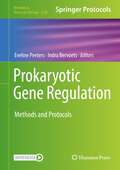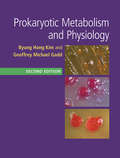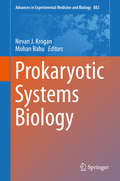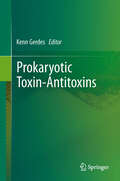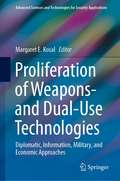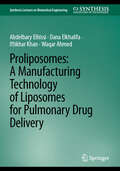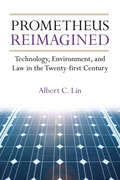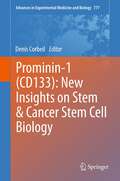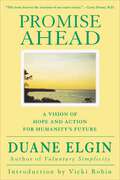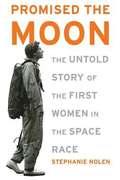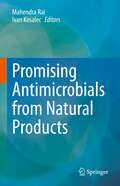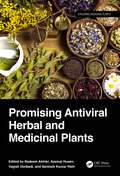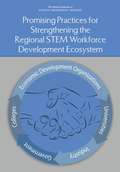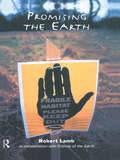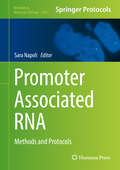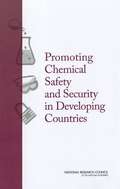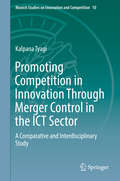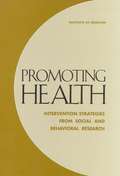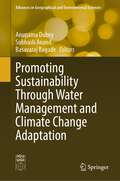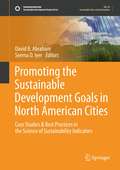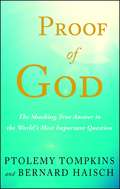- Table View
- List View
Prokaryotic Gene Regulation: Methods and Protocols (Methods in Molecular Biology #2516)
by Eveline Peeters Indra BervoetsThis volume presents a collection of versatile methodologies to investigate prokaryotic gene regulation, with focus on the different levels of information processing and usefulness for various model organisms, whether archaeal, bacterial, or both. The chapters in this book are divided into four sections. Section One covers methods that enable the study of the structure of the bacterial/archaeal chromosome, the main template for all gene regulatory processes, and its epigenetic modification. Section Two looks at a selection of approaches that enable higher levels of understanding of transcription initiation, a key step in information processing. Section Three discusses the investigation of regulating transcription factors, which are often considered the main players in gene regulation in prokaryotic cells. The Fourth Section focuses on the next stage of information processing at which gene regulation occurs, namely the RNA-based level. Written in the highly successful Methods in Molecular Biology series format, chapters include introductions to their respective topics, lists of the necessary materials and reagents, step-by-step, readily reproducible laboratory protocols, and tips on troubleshooting and avoiding known pitfalls.Cutting-edge and comprehensive, Prokaryotic Gene Regulation: Methods and Protocols is a valuable resource for researchers interested in learning more about this diverse field.
Prokaryotic Metabolism and Physiology
by Geoffrey Michael Gadd Byung Hong KimVast numbers of different prokaryotic microorganisms shape the biosphere, with diverse metabolic capabilities. Determination of genome sequences for a wide range of bacteria and archaea now requires an in-depth knowledge of prokaryotic metabolic function to give biochemical, physiological and ecological meaning to the genomic information. This new edition describes up-to-date knowledge of the key metabolic processes that occur under different conditions, and the cellular processes that determine prokaryotic roles in the environment, biotechnology and human health. Essential for students of microbiology, applied microbiology, biotechnology, genomics and systems biology, this advanced textbook covers prokaryotic structure, composition, nutrient transport, biosynthesis and growth. Newly characterised metabolic pathways are included, as well as the latest understanding of metabolic regulation and stress responses. Additionally, the link between energetics, growth and survival is discussed as well as the maintenance of genetic integrity by the bacterial immune system.
Prokaryotic Systems Biology
by Nevan J. Krogan Mohan BabuThis book focuses on innovative experimental and computational approaches for charting interaction networks in bacterial species. The first part of the volume consists of nine chapters, focusing on biochemical and genetics and genomics approaches including yeast two hybrid, metagenomics, affinity purification in combination with mass spectrometry, chromatin-immunoprecipitation coupled with sequencing, large-scale synthetic genetic screens, and quantitative-based mass spectrometry strategies for mapping the bacterial physical, functional, substrate, and regulatory interaction networks needed for interpreting biological networks, inferring gene function, enzyme discovery, and identifying new drug targets. The second part comprises five chapters, covering the network of participants for protein folding and complex enzyme maturation. It also covers the structural approaches required to understand bacterial intramembrane proteolysis and the structure and function of bacterial proteins involved in surface polysaccharides, outer membrane, and envelope assembly. This volume concludes with a focus on computational and comparative genomics approaches, especially network-based methods for predicting physical or functional interactions, and integrative analytical approaches for generating more reliable information on bacterial gene function. This book provides foundational knowledge in the understanding of prokaryotic systems biology by illuminating how bacterial genes f unction within the framework of global cellular processes. The book will enable the microbiology community to create substantive resources for addressing many pending unanswered questions, and facilitate the development of new technologies that can be applied to other bacterial species lacking experimental data.
Prokaryotic Toxin-Antitoxins
by Kenn GerdesProkaryotic Toxins - Antitoxins gives the first overview of an exciting and rapidly expanding research field. Toxin - antitoxin (TA) genes were discovered on plasmids 30 years ago. Since then it has become evident that TA genes are highly abundant in bacterial and archaeal chromosomes. TA genes code for an antitoxin that combine with and neutralize a cognate toxin. When activated, the toxins inhibit protein synthesis and cell growth and thereby induce dormancy and multidrug tolerance (persistence). Remarkably, in some species, the TA gene families have undergone dramatic expansions. For example, the highly persistent major human pathogen Mycobacterium tuberculosis has »100 TA loci. The large expansion of TA genes by some organisms is a biological mystery. However, recent observations indicate that TA genes contribute cumulatively to the persistence of bacteria. This medically important phenomenon may thus for the first time become experimentally tractable at the molecular level.
Prokhorov and Contemporary Probability Theory
by Albert N. Shiryaev Ernst L. Presman S. R. VaradhanThe role of Yuri Vasilyevich Prokhorov as a prominent mathematician and leading expert in the theory of probability is well known. Even early in his career he obtained substantial results on the validity of the strong law of large numbers and on the estimates (bounds) of the rates of convergence, some of which are the best possible. His findings on limit theorems in metric spaces and particularly functional limit theorems are of exceptional importance. Y.V. Prokhorov developed an original approach to the proof of functional limit theorems, based on the weak convergence of finite dimensional distributions and the condition of tightness of probability measures. The present volume commemorates the 80th birthday of Yuri Vasilyevich Prokhorov. It includes scientific contributions written by his colleagues, friends and pupils, who would like to express their deep respect and sincerest admiration for him and his scientific work.
Proliferation of Weapons- and Dual-Use Technologies: Diplomatic, Information, Military, and Economic Approaches (Advanced Sciences and Technologies for Security Applications)
by Margaret E. KosalThis book explores and analyzes the rapid pace of technological evolution in diplomatic, information, military, and economic sectors, which has contributed to a dynamic international policy environment. Global political stability is greatly influenced by innovations originating from numerous sources, including university labs, the technology sector, and military research. Collectively, these innovations guide the movement of people, ideas, and technology that in turn affect the international balance of power. The objective of this volume is to develop new insights into how the proliferation of innovative ideas, low-cost weapons, and dual-use technologies impact the changing global security landscape. Innovative and dual-use technologies can be used for beneficial purposes or defensive purposes. Alternatively they may be appropriated or employed for nefarious purposes by hostile military powers and non-state actors alike. Such actions can threaten global security and stability. As the complexity of technological innovations continues to increase, existing control mechanisms such as international regulations and security arrangements may be insufficient to stem the tide of proliferation over time. As such, this works seeks to assess and present policy solutions to curtail the threat to global stability posed by the proliferation of weapons and dual-use technology.
Proliposomes: A Manufacturing Technology of Liposomes for Pulmonary Drug Delivery (Synthesis Lectures on Biomedical Engineering)
by Waqar Ahmed Abdelbary Elhissi Dana Elkhalifa Iftikhar KhanProliposome technologies are stable phospholipid formulations that provide an approach to generating liposomes upon addition of aqueous phase prior to administration. In this monograph, the authors review the potential of proliposomes for pulmonary delivery of liposomes via nebulization using air-jet, ultrasonic and vibrating-mesh nebulizers. They explore both proliposome types, particulate-based and solvent-based. The book concludes that both types are capable of exploiting the energy of nebulization to generate liposomes within nebulizers.
Prometeo americano: El triunfo y la tragedia de J. Robert Oppenheimer
by Kai Bird Martin J. SherwinPremio Pulitzer 2006 National Book Critics Circle Award 2005 Duff Cooper Prize 2008 La biografía definitiva de Oppenheimer, el padre de la bomba atómica y una de las figuras más emblemáticas del siglo XX. El 16 de julio de 1945, en el desierto de Nuevo México, se detonaba en secreto la primera bomba atómica. Impactado por el poder destructivo de su creación, J. Robert Oppenheimer, director del Proyecto Manhattan, se comprometería desde entonces a luchar contra el desarrollo de la bomba de hidrógeno y contra la guerra nuclear. Sospechoso de comunista para los Estados Unidos de la era McCarthy, fue perseguido por el FBI, calumniado como espía de la Unión Soviética y obligado a dimitir de cualquier función pública. Su vida privada fue arrastrada del mismo modo hacia el esperpento; su casa fue allanada con micrófonos ocultos, y su teléfono, intervenido. No sería hasta 1963 que el presidente Kennedy lo rehabilitaría y, con ello, su figura obtendría otro cariz para los ciudadanos del mundo entero. Treinta años de entrevistas a familiares, amigos y colegas; de búsqueda en archivos del FBI; de análisis de las cintas con discursos e interrogatorios, y de hallazgos de documentos privados del físico nuclear dieron como resultado este monumental libro. Una biografía de una enorme minuciosidad que ofrece una visión íntima del científico más famoso de su generación; una de las figuras icónicas del siglo xx para quien el triunfo y la tragedia se unieron en un nudo gordiano. Críticas:«Se lee como un thriller, cautivador y aterrador por momentos. Sospecho que este año no aparecerá una biografía más absorbente ni, dados los peligros a los que nos enfrentamos, más importante que esta».John Carey, Sunday Times «La biografía definitiva [...] La vida de Oppenheimer no nos influye; nos persigue».Newsweek «Todas las obras anteriores sobre este tema quedan, por decirlo de la manera más amable, despedazadas, frente a este libro que es metafórica y literalmente monumental».Mark Lawson, Esquire «Esta imponente biografía, resultado de veinticinco años de investigación, reevalúa la figura de Oppenheimer, y ofrece uno de los retratos más complejos del físico hasta la fecha».The New Yorker «Un libro esencial».Time «Una obra de voluminosa erudición y lúcida perspicacia que une el retrato del multifacético Oppenheimer con la aguda comprensión de su naturaleza».The New York Times «Un relato magistral del ascenso y la caída de Oppenheimer, situado en el contexto de las turbulentas décadas de la transformación de Estados Unidos. Es un tour de force».Los Angeles Times Book Review «La primera biografía que da cuenta de la extraordinaria complejidad de Oppenheimer. Se erige como un Everest entre las montañas de libros sobre el proyecto de la bomba atómica y Oppenheimer, y es un logro que tal vez no será superado ni igualado».The Boston Globe «Excepcional y documentada con exhaustividad. Kai Bird y Martin Sherwin no solo explican la deslumbrante, emblemática y denigrante carrera de Oppenheimer, sino que también iluminan las tensiones de la cultura estadounidense que conformaron las nociones actuales de liberalismo y reacción».The Atlantic Journal
Prometheus Reimagined: Technology, Environment, and Law in the Twenty-first Century
by Albert C. LinTechnologies such as synthetic biology, nanotechnology, artificial intelligence, and geoengineering promise to address many of our most serious problems, yet they also bring environmental and health-related risks and uncertainties. Moreover, they can come to dominate global production systems and markets with very little public input or awareness. Existing governance institutions and processes do not adequately address the risks of new technologies, nor do they give much consideration to the concerns of persons affected by them. Instead of treating technology, health, and the environment as discrete issues, Albert C. Lin argues that laws must acknowledge their fundamental relationship, anticipating both future technological developments and their potential adverse effects. Laws should encourage international cooperation and the development of common global standards, while allowing for flexibility and reassessment.
Prominin-1 (CD133): New Insights on Stem & Cancer Stem Cell Biology
by Denis CorbeilProminin-1 or otherwise known as CD133 is a glycoprotein that is present in humans and mice. Since the first description of prominin in 1997, in mouse neuroepithelial cells and in human hematopoietic stem cells as AC133 antigen, this molecule has aroused a large interest especially, as a stem cell marker, that gave rise to an ever growing body of publications and more recently its expression in cancer stem cells. Controversies as to its role as a cancer stem and its detection in different models, as well as its use as a prognostic marker have emerged. Yet, beyond its use as a stem cell and cancer stem cell marker, prominin-1/CD133 displays unique biological features and appears of importance in other processes like for example in retinal biogenesis. Indeed, this five-transmembrane plasma membrane glycoprotein, which marks membrane protrusions is associated with several essential processes like cell polarity, asymmetric cell division and membrane remodeling. We propose to review current knowledge about this intriguing molecule and present pertinent information to determine the biological role of prominins and assess their importance in medicine and cancer research. The primary audience for this book is geared towards scientists and researchers with interest in cancer stem cells, stem cells, cell biology, neurobiology, and regenerative medicine.
Promise Ahead: A Vision of Hope and Action for Humanity's Future
by Duane ElginThe sequel to Duane Elgin’s bestselling classic Voluntary Simplicity, which changed the lives of thousands and was called the “bible” of the simplicity movement by the Wall Street Journal, Promise Ahead looks beneath the headlines to reveal the deeper currents now changing our lives. Elgin sees two powerful sets of trends converging in the coming decades. The first set he calls “adversity trends.” These include 1. Global climate changes that threaten our food supply2. Massive human population3. Mass extinction of species4. Rapid depletion of crucial natural resources 5. Civil unrest caused by global poverty. The second set he calls “opportunity trends.” These include1. Recognition of the universe as a living system2. The quiet revolution toward simpler ways of living3. Use of the Internet as a tool for social awareness and change4. Growing efforts toward reconciliation of racial, gender, religious, and other differences If we meet these unprecedented challenges, we can make a dramatic leap in our evolutionary journey and will have a very promising future.
Promise or Peril: The Strategic Defense Initiative
by Zbigniew Brzezinski Richard Sincere Marin Stnnecki Peter WehnerThirty-five Essays by statesmen, scholars, and strategic analysts.
Promised the Moon: The Untold Story of the First Women in the Space Race
by Stephanie NolenA female world-record-setting pilot, Jerrie Cobb was recruited in 1959 to take the astronaut tests. She excelled, so the doctor who supervised the selection of NASA's Mercury astronauts recruited additional female pilots. Twelve performed exceptionally. Stephanie Nolen tracked down eleven of the surviving "Fellow Lady Astronaut Trainees" and learned the story of those early days of the space race and the disappointment when, in 1961, the women were grounded.
Promising Antimicrobials from Natural Products
by Mahendra Rai Ivan KosalecGiven novel infectious diseases such as COVID-19 and antibiotic resistance new antimicrobial discovery is an important research area. Considering that nature is a vast source of bioactive molecules with antimicrobial activity, the main aim of this book is to present a comprehensive outlook of current research in the field of natural antimicrobials. It discusses the antimicrobial activity of medicinal plants, beehives, and mushrooms with a global coverage of antimicrobial agents from rich forests of Brazil (Amazon), North-Eastern forests of Peru, Argentina, Colombia, India, Bangladesh, Nepal, Middle East, Turkey, Croatia, Greece, Germany and Russia.The book covers the results of the in vitro screening of antimicrobial activities of extracts and isolated compounds from natural origins. It is divided into three sections: i) Section I, includes natural antimicrobials from plants; ii) Section II incorporates antimicrobial agents/secondary metabolites from plants, and (iii) Section III focuses on antimicrobials from mushrooms, beehive and delivery systems for different types of antimicrobials.Promising Antimicrobials From Natural Products is immensely useful for post graduate students, researchers in plant science, microbiology, biotechnology, pharmacology, pharma companies and those who are interested in herbal, eco-friendly, cost-effective and sustainable antimicrobials
Promising Antiviral Herbal and Medicinal Plants (Exploring Medicinal Plants)
by Nadeem Akhtar Azamal Husen Vagish Dwibedi Santosh Kumar RathWith the prevalence of viral diseases causing significant health challenges and the emergence of highly infectious and difficult-to-treat conditions, such as Ebola, HIV/AIDS, and Hepatitis B, there is a pressing need for effective antiviral treatments. Throughout history, viral infections have caused devastating pandemics, leading to widespread illness and mortality. Notable examples include the Black Death caused by Yersinia pestis and the Spanish flu pandemic of 1918. To address this ongoing threat, exploring the potential of herbal and medicinal plants as a source of antiviral compounds is crucial. Promising Antiviral Herbal and Medicinal Plants provides a comprehensive overview of the latest research in the field of antiviral properties of herbal and medicinal plants. Features: Compiles cutting-edge research on the antiviral properties of various plants, highlighting their potential therapeutic applications. Discusses various chemical components of the medicinal and herbal plants with the known bioactive constituents and their antiviral applications. Elaborates on medicinal and herbal plants' opportunities and future direction for drug synthesis against various viral diseases. A volume in the Exploring Medicinal Plants series, this book is an essential resource for researchers, healthcare professionals, and those interested in viral infections and their management.
Promising Practices for Strengthening the Regional STEM Workforce Development Ecosystem
by Engineering Medicine National Academies of SciencesU.S. strength in science, technology, engineering, and mathematics (STEM) disciplines has formed the basis of innovations, technologies, and industries that have spurred the nation’s economic growth throughout the last 150 years. Universities are essential to the creation and transfer of new knowledge that drives innovation. This knowledge moves out of the university and into broader society in several ways — through highly skilled graduates (i.e. human capital); academic publications; and the creation of new products, industries, and companies via the commercialization of scientific breakthroughs. Despite this, our understanding of how universities receive, interpret, and respond to industry signaling demands for STEM-trained workers is far from complete. Promising Practices for Strengthening the Regional STEM Workforce Development Ecosystem reviews the extent to which universities and employers in five metropolitan communities (Phoenix, Arizona; Cleveland, Ohio; Montgomery, Alabama; Los Angeles, California; and Fargo, North Dakota) collaborate successfully to align curricula, labs, and other undergraduate educational experiences with current and prospective regional STEM workforce needs. This report focuses on how to create the kind of university-industry collaboration that promotes higher quality college and university course offerings, lab activities, applied learning experiences, work-based learning programs, and other activities that enable students to acquire knowledge, skills, and attributes they need to be successful in the STEM workforce. The recommendations and findings presented will be most relevant to educators, policy makers, and industry leaders.
Promising the Earth
by Robert LambThis is a tale of our times. marking the 25th anniversary of Friends of the Earth, Promising the Earth locates the inside story of pioneering campaigns within a broader canvas. No single organization's record can expect to paraphrase the development of environmental consciousness and the growth of grassroots environmental movement, but experiences bear intimate witness to a story that is still unfolding.Enlivened by arresting illustrations and glimpses of colourful personalities that the issues of the day have brought to the fore, Promising the Earth takes stock of changing realities in, and attitudes to, environmental care over the past quarter-century. This eventful chronical acts as a platform from which to survey the future that lies beyond the threshold of the 21st century.
Promoter Associated RNA
by Sara NapoliThis volume is divided in four sections; covering genome wide approaches, techniques for characterize of paRNA structural features are described, selecting pa-RNA, and paRNA therapeutic potential. Chapters describe how siRNAsdirected against paRNAs can be applied in vivo to modulate transcription of important genes controlled by paRNAs. Written in the highly successful Methods in Molecular Biology series format, chapters include introductions to their respective topics, lists of the necessary materials and reagents, step-by-step, readily reproducible laboratory protocols, and tips on troubleshooting and avoiding known pitfalls. Authoritative and cutting-edge, Promoter Associated RNA: Methods and Protocols aims to demonstrate paRNAs as new class of regulatory molecules, to further investigate and value as tools for fine transcriptional tuning.
Promoting Chemical Laboratory Safety and Security in Developing Countries
by National Research Council of the National AcademiesThere is growing concern about the possible use of toxic industrial chemicals or other hazardous chemicals by those seeking to perpetrate acts of terrorism. The U.S. Chemical Security Engagement Program (CSP), funded by the U.S. Department of State and run by Sandia National Laboratories, seeks to develop and facilitate cooperative international activities that promote best practices in chemical security and safe management of toxic chemicals, including: Partnering with host governments, chemical professionals, and industry to assess and fill gaps in chemical security abroad. Providing technical expertise and training to improve best practices in security and safety among chemical professionals and industry. Increasing transparency and accountability for dangerous chemical materials, expertise, and technologies. Providing opportunities for collaboration with the international professional chemical community. The Department of State called on the National Academies to assist in the CSP's efforts to promote chemical safety and security in developing countries.
Promoting Competition in Innovation Through Merger Control in the ICT Sector: A Comparative and Interdisciplinary Study (Munich Studies on Innovation and Competition #10)
by Kalpana TyagiThis book addresses the question of how competition authorities assess mergers in the Information Communication Technology (ICT) sector so as to promote competition in innovation. A closer look at the question reveals that it is far more complex and difficult to answer for the ICT, telecommunications and multi-sided platform (MSP) economy than for more traditional sectors of the economy. This has led many scholars to re-think and question whether the current merger control framework is suitable for the ICT sector, which is often also referred to as the new economy. The book pursues an interdisciplinary approach combining insights from law, economics and corporate strategy. Further, it has a comparative dimension, as it discusses the practices of the US, the EU and, wherever relevant, of other competition authorities from around the globe. Considering that the research was conducted in the EU, the practices of the European Commission remain a key aspect of the content.Considering its normative dimension, the book concentrates on the substantive aspects of merger control. To facilitate a better understanding of the most important points, the book also offers a brief overview of the procedural aspects of merger control in the EU, the US and the UK, and discusses recent amendments to Austrian and German law regarding the notification threshold. Given its scope, the book offers an invaluable guide for competition law scholars, practitioners in the field, and competition authorities worldwide.
Promoting Health: Intervention Strategies from Social and Behavioral Research
by Brian D. Smedley S. Leonard SymeAt the dawn of the twenty-first century, Americans enjoyed better overall health than at any other time in the nation’s history. Rapid advancements in medical technologies, breakthroughs in understanding the genetic underpinnings of health and ill health, improvements in the effectiveness and variety of pharmaceuticals, and other developments in biomedical research have helped develop cures for many illnesses and improve the lives of those with chronic diseases. By itself, however, biomedical research cannot address the most significant challenges to improving public health. Approximately half of all causes of mortality in the United States are linked to social and behavioral factors such as smoking, diet, alcohol use, sedentary lifestyle, and accidents. Yet less than five percent of the money spent annually on U.S. health care is devoted to reducing the risks of these preventable conditions. Behavioral and social interventions offer great promise, but as yet their potential has been relatively poorly tapped. Promoting Health identifies those promising areas of social science and behavioral research that may address public health needs. It includes 12 papers—commissioned from some of the nation’s leading experts—that review these issues in detail, and serves to assess whether the knowledge base of social and behavioral interventions has been useful, or could be useful, in the development of broader public health interventions.
Promoting Rental Housing Affordability in European Cities: Learning from the Cases of Milan and Vienna (SpringerBriefs in Applied Sciences and Technology)
by Marco PeveriniThis book investigates policies for the promotion of housing affordability in the rental sector of attractive cities in Europe. Affordability links the housing situation to the economic situation of households, referring to conditions of access to housing and to the role of housing in determining poverty or wealth. The book examines the current affordability crisis and frames it in the ongoing process of urban restructuring and devolution of welfare. From the perspective of the Foundational Economy, the book calls for a proactive and effective role of public administrations in making the rental sector an affordable and stable alternative to housing financialization and commodification. By intertwining theory construction and real-world data collected through case studies in Milan and Vienna, the book provides an original framework for the analysis of public policies that promote rental affordability in a multi-level setting. Through the analysis, it highlights critical nodes of the different (housing, urban, and social) policy domains at stake in the promotion of rental affordability in attractive cities. The book proposes a shift from the currently dominant supply-side argument to an integrated, intersectoral and multi-scalar policy system for making cities more affordable.
Promoting Sustainability Through Water Management and Climate Change Adaptation (Advances in Geographical and Environmental Sciences)
by Subhash Anand Anupama Dubey Basavaraj BagadeThis book explores the concept and issues of sustainability and its symbiotic relationship with existing water resources, the surrounding climate and geospatial development. It covers many dimensions of sustainable water resources, climatic variability, change. It also includes case studies on the basis of specific problems and issues, providing sustainable solutions for the future of the earth. Over the past several decades, climate change has significantly impacted a number of components of the hydrological cycle and hydrological systems, including changes in precipitation patterns and intensity; widespread melting of snow and ice; increased atmospheric water vapour; increased evaporation; and changes in soil moisture and runoff. Excess runoff eventually reaches larger bodies of water such as lakes, estuaries and the ocean, contaminating the water supply and limiting human and environmental access to water. An improved understanding of how changing anthropogenic activities could affect water resources, and climate in various parts of the world is a necessary step towards sustainability. This awareness requires analyses of challenging interactive areas within the geosphere, biosphere, hydrosphere, cryosphere and sociosphere, as resultant long-term sustainable strategies and measures are greatly needed.
Promoting the Sustainable Development Goals in North American Cities: Case Studies & Best Practices in the Science of Sustainability Indicators (Sustainable Development Goals Series)
by David B. Abraham Seema D. IyerThis volume presents North American best practices and perspectives on developing, managing and monitoring indicators to track development progress towards the Sustainable Development Goals (SDGs) in local communities and cities. In 4 main sections, the book presents and frames the many ways in which community indicator programs are either integrating or retooling to integrate the SDGs into their existing frameworks, or how they are developing new programs to track and report progress on the SDGs. This is the first volume that focuses on SDG adoption within the context of North Americans cities and communities, and the unique issues and opportunities prevalent in these settings. The chapters are developed by experienced academics and practitioners of community planning and sustainable development, and will add broad perspective on public policy, organizational management, information management and data visualization. This volume presents a case-study approach to chapters, offering lessons that can be used by three main audiences: 1) teachers and researchers in areas of urban, regional, and environmental planning, urban development, and public policy; 2) professional planners, decision-makers, and urban managers; and 3) sustainability activists and interested groups.
Proof of God: The Shocking True Answer to the World's Most Important Question
by Bernard Haisch Ptolemy TompkinsA Seeker, a Scientist, and the Stunning Answer to the World&’s Oldest Question Ptolemy Tompkins, collaborator on the New York Times bestselling Proof of Heaven and Proof of Angels, is at his lowest point, personally and professionally, when he meets with an astrophysicist with a message for the world: God is real, and science proves it.Proof of God is the unlikely story of how this serious scientist and this broken writer, in a series of conversations stretching over several months, come to understand that the universe—from the smallest sub-atomic particles that make up everything in existence to the farthest reaches of the universe—bears evidence of a creator. In short, God not only exists, but science gives us tools to know this. Proof of God shows how science and religion both point to the same stunning and world-changing truth: God is real.
